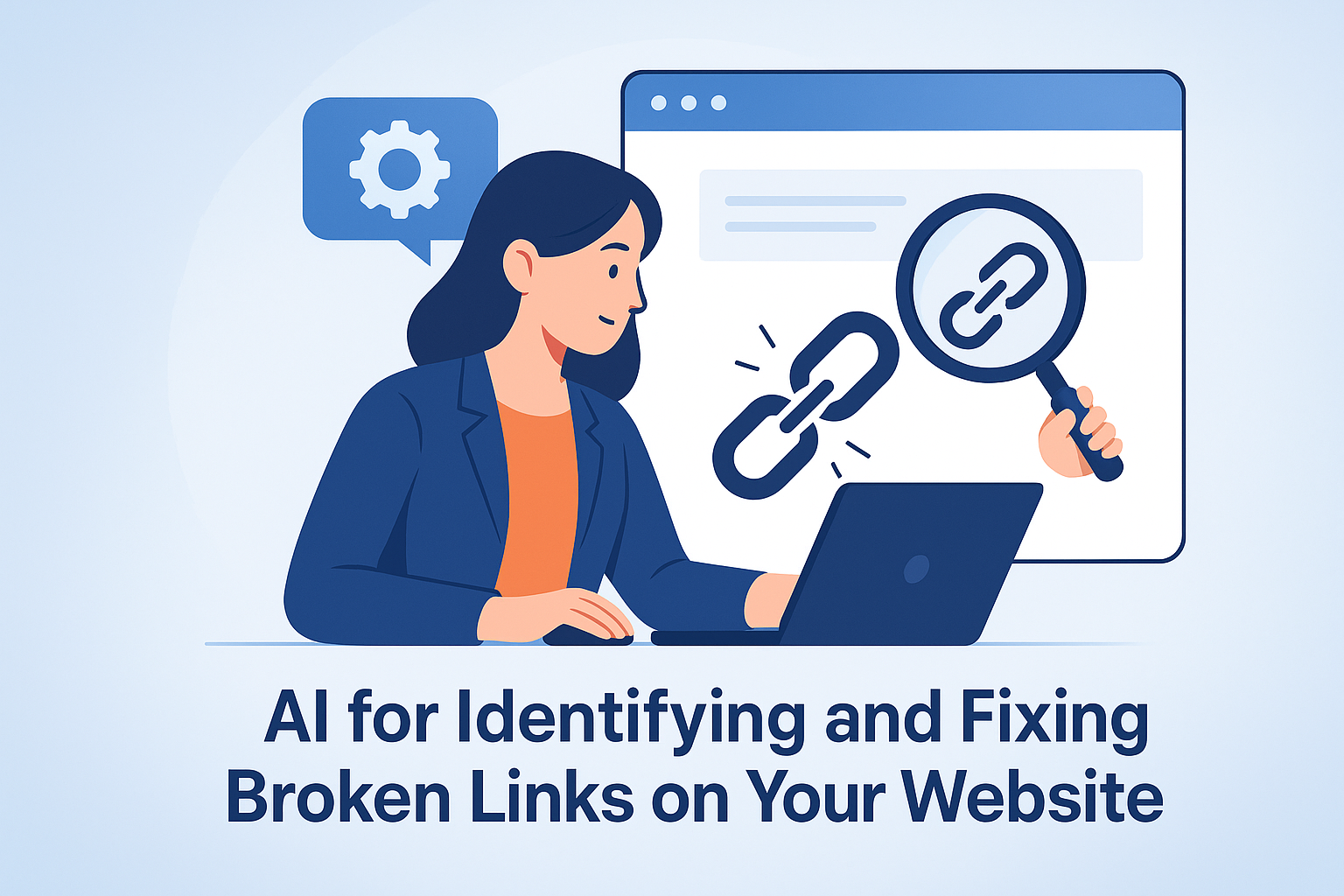Internal links are the invisible webbing that holds your site’s structure—and your SEO—together.
Done right, they improve:
- Crawlability
- Indexation
- Keyword relevance
- User experience
- Session duration
- Conversion paths
But most websites struggle to keep their internal linking strategy consistent, up-to-date, or even intentionally planned. That’s where AI steps in.
With DIYSEO, you can automate internal link recommendations and placements using:
- DIYSEO GPT’s expert-written prompts like Top Performing Pages, Query Position Changes, and Page-to-Page Link Suggestions
- SEO AI Writer to generate natural, contextual internal link placements
- Link Marketplace to support high-performing content clusters externally
Let’s walk through how to create a seamless, AI-driven internal linking workflow that improves navigation, SEO, and UX.
Why Internal Linking Matters for UX and SEO
Internal links serve two purposes:
🧭 For Users:
- They guide visitors to related or deeper content
- Reduce bounce rates
- Improve session duration and page views per visit
🔎 For Search Engines:
- Help crawlers discover and prioritize pages
- Distribute link equity from authority pages
- Reinforce keyword/topic relevance through anchor text
Without internal links, your site becomes fragmented—and your users (and Googlebot) get lost.
Common Internal Linking Mistakes
Before automation, here’s what most sites get wrong:
| Mistake | Impact |
|---|---|
| Random link placement | Breaks logical user journeys |
| Overlinking in navigation | Reduces contextual SEO value |
| Orphan pages | Content gets ignored by users and crawlers |
| Irrelevant anchor text | Confuses both bots and people |
| No mobile link UX | Tap targets too small or hidden |
The fix? Let AI help build smart, intent-aligned, scalable internal link architecture.
Step-by-Step: Automating Internal Linking with DIYSEO
✅ Step 1: Identify Internal Linking Opportunities with DIYSEO GPT
Start with these pre-built prompts to surface the best opportunities for internal links:
📈 Top Performing Pages
This shows which pages drive the most traffic. Use them to pass link equity to pages that need a boost.
Ask in Chat History:
“Which underperforming URLs should I link to from these top pages?”
📉 Query Position Changes
Find pages that have dropped in rankings. Often, they need internal reinforcement.
Ask:
“Which pages that lost rankings could be internally linked from relevant, higher-ranking content?”
🔗 Page-to-Page Link Suggestions (Advanced Prompt)
Use this to generate direct link pairs based on topical similarity, intent overlap, and engagement signals.
Example output:
- Link from
/ai-content-tools→/ai-keyword-strategyusing anchor text: “AI-powered keyword research” - Link from
/seo-audit-checklist→/how-to-fix-technical-seo-errorsusing anchor: “technical SEO tips”
✅ Step 2: Automate Contextual Placement with SEO AI Writer
Once you have the page pairs and anchor text, use SEO AI Writer to place those links naturally.
Prompt:
“Insert a contextual internal link to /ai-keyword-strategy within this section of the article. Anchor text: AI-powered keyword research. Make it flow naturally.”
Repeat this for all recommendations provided by the GPT prompt to:
- Ensure smooth reading
- Maintain keyword consistency
- Improve SEO without sounding forced
You can also ask:
“Add a ‘What to read next’ section that links to three related posts.”
✅ Step 3: Fix Orphan Pages
Use DIYSEO GPT’s Indexation Overview and Crawled – Not Indexed prompts to find pages that may be orphaned or isolated from the rest of your internal structure.
Ask:
“Which indexed pages have no internal links pointing to them?”
Then, run Top Performing Pages again to find candidates that should link to them, and repeat the placement process via SEO AI Writer.
✅ Step 4: Improve UX Through Strategic Link Formatting
AI can help improve not just what you link—but how you link.
Use SEO AI Writer to:
- Style internal links as in-line guides or suggested reads
- Create mobile-friendly buttons or sticky CTAs that link internally
- Insert “hub sections” mid-article for long-form content
Prompt:
“Add a sidebar-style callout linking to /ai-seo-guide, titled ‘Need the Full Strategy?’ Use concise copy and a button.”
This balances navigation with storytelling—keeping users on site longer.
Best Practices for Internal Linking with AI
| Strategy | Tool | Execution |
|---|---|---|
| Reinforce decaying pages | DIYSEO GPT (Query Position Changes) | Link from fresh, high-traffic posts |
| Distribute authority | GPT + Top Performing Pages | Point to high-value conversion pages |
| Improve topic clustering | Page-to-Page Link Suggestions | Build semantic content networks |
| Natural placement | SEO AI Writer | Seamless anchor integration |
| UX-friendly format | SEO AI Writer | Use buttons, cards, or in-line calls |
Bonus: Pair Internal Links with External Authority from Link Marketplace
Once you’ve built a strong internal architecture, use Link Marketplace to:
- Boost the pillar pages in your internal link clusters
- Increase visibility for newly linked orphan pages
- Build backlinks to high-authority content hubs you just created
Example:
You build a content cluster on “AI SEO Tools,” linking:
/ai-keyword-strategy/ai-content-writer-review/seo-automation-case-study
Use Link Marketplace to:
- Acquire backlinks to
/ai-seo-tools-guide(the hub) - Strengthen cluster-wide equity
- Improve topical authority and trust
Real-World Use Case: Internal Linking Automation in Action
Problem: A B2B SaaS blog had strong traffic but flat rankings across supporting pages. Most were orphaned or inconsistently linked.
DIYSEO Strategy:
- Ran Top Performing Pages → Flagged 12 content assets with high traffic
- Used Page-to-Page Link Suggestions → Mapped 38 new internal links with optimized anchors
- Used SEO AI Writer → Rewrote content blocks to integrate those links
- Used Link Marketplace → Promoted pillar pages with external backlinks
Results:
- 23% lift in page views per session
- 18% reduction in bounce rate
- 3 supporting blog posts moved into top 10 Google positions within 30 days
Final Thoughts
Internal links are essential—but they’re often overlooked or mismanaged.
With DIYSEO’s AI-powered stack, you can automate internal linking workflows that:
- Make your content easier to navigate
- Improve topical relevance for search engines
- Reduce bounce rates and increase session duration
- Boost your authority and rankings from the inside out
Use:
- DIYSEO GPT to uncover link opportunities based on live performance data
- SEO AI Writer to place links seamlessly and improve user flow
- Link Marketplace to amplify content hubs and turn internal strength into external trust
A connected website is a high-performing website—and AI makes it scalable.
Frequently Asked Questions
1. How can AI help in automating internal link placement on my website?
AI can significantly transform the way we approach internal link placement by automating what has traditionally been a labor-intensive process. Instead of manually sifting through numerous pages to discern where links should be strategically placed, AI utilizes algorithms that analyze content, user behavior, and historical data to identify optimal link opportunities. By doing this, AI ensures links not only enhance navigation and user engagement but are also positioned where they’re most likely to improve search engine visibility. Through machine learning, AI continues to learn and adapt, refining its strategies to align better with user patterns and industry standards. This intelligent automation not only saves time and resources but also enhances the user experience by ensuring consistency, relevance, and efficiency in link placements across your website.
2. What are the benefits of using AI for internal link placement compared to manual methods?
Using AI for internal link placement offers several advantages over traditional manual methods. Firstly, AI-driven approaches ensure precision and accuracy in link placement by analyzing large quantities of data far more efficiently than a human ever could. This means better link relevancy and contextual accuracy, enhancing the user journey. Additionally, AI operates at scale, meaning it can manage and optimize internal links in real-time as content and user behavior evolve. This agility allows websites to keep pace with new trends and changes in user expectations without falling behind. Moreover, AI helps in identifying new linking opportunities that might have been overlooked manually and can adapt to SEO changes in real-time, improving your site’s performance in search engine rankings. Overall, the integration of AI in link placement creates a streamlined, dynamic, and responsive digital environment for users.
3. Can AI negatively impact my site’s user experience if implemented poorly?
While AI offers incredible tools for enhancing internal link placement, it’s essential to implement these tools thoughtfully to avoid negative impacts on user experience. Poorly implemented AI can lead to misplaced or excessive internal links, which might overwhelm or confuse visitors, detracting from the seamless navigation experience. Similarly, if the AI doesn’t accurately understand the context of content due to insufficient training data or inappropriate algorithms, it could link irrelevant pages, diminishing the perceived value and credibility of your site. To mitigate these risks, it is crucial to ensure your AI tools are well-developed, continuously monitored, and adjusted as necessary by human oversight to maintain optimal performance and user satisfaction. Effective training and testing phases will help fine-tune AI systems to ensure they align with your website’s specific tone, objectives, and user expectations.
4. How does AI-assisted internal linking improve SEO and search engine rankings?
AI-assisted internal linking optimizes the structure of your website, enhancing the crawlability by search engines and improving overall SEO performance. The strategic placement of internal links helps distribute page authority more evenly across your site, allowing less prominent pages to be discovered and ranked by search engines. Furthermore, AI algorithms can analyze search behavior and keyword usage to ensure that link placements boost the visibility of critical content and metadata, aligning with SEO best practices. This effectively enhances indexation dynamics and increases the chances of pages being ranked higher. Moreover, by facilitating a smoother content journey for users, AI-driven link placement can reduce bounce rates and increase time spent on site, metrics that search engines often use as indicators of relevance and quality, thereby indirectly boosting rankings.
5. Is AI-driven internal link placement suitable for all types of websites?
AI-driven internal link placement can benefit a broad range of websites, from e-commerce platforms and news outlets to corporate blogs and educational sites. However, its suitability largely depends on the website’s size, complexity, and the volume of content it manages. Larger sites with extensive content libraries stand to gain the most, as AI can quickly scale operations and manage vast data analytics, which might be impractical if handled manually. Conversely, smaller sites with limited content might not require such complexity and could suffice with simpler linking strategies. Furthermore, niche websites with highly specialized audiences may find more tailored or handcrafted link strategies beneficial in maintaining user expectations and context accuracy. It is important for any business or site owner to evaluate their specific needs and choose an AI-driven approach that aligns with their digital strategy, resource availability, and desired user experience outcomes.



